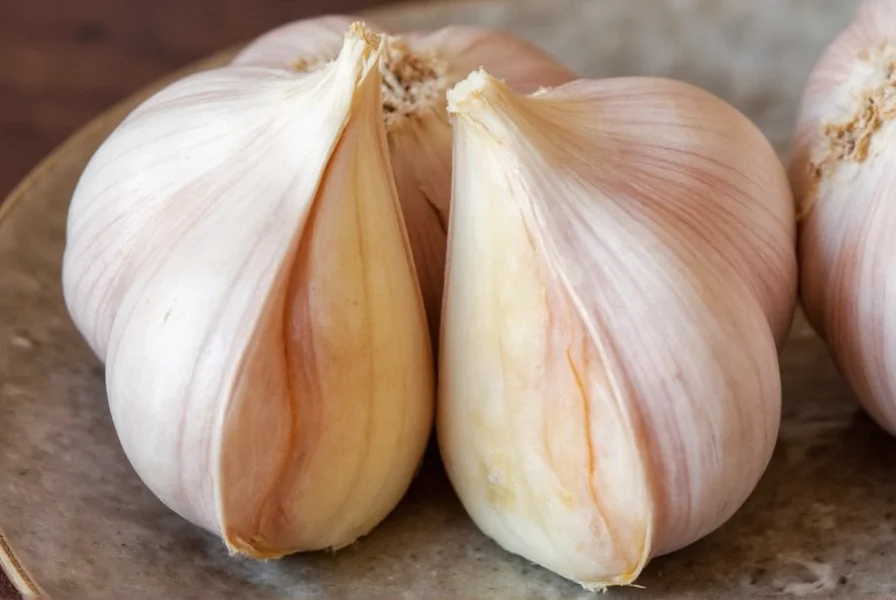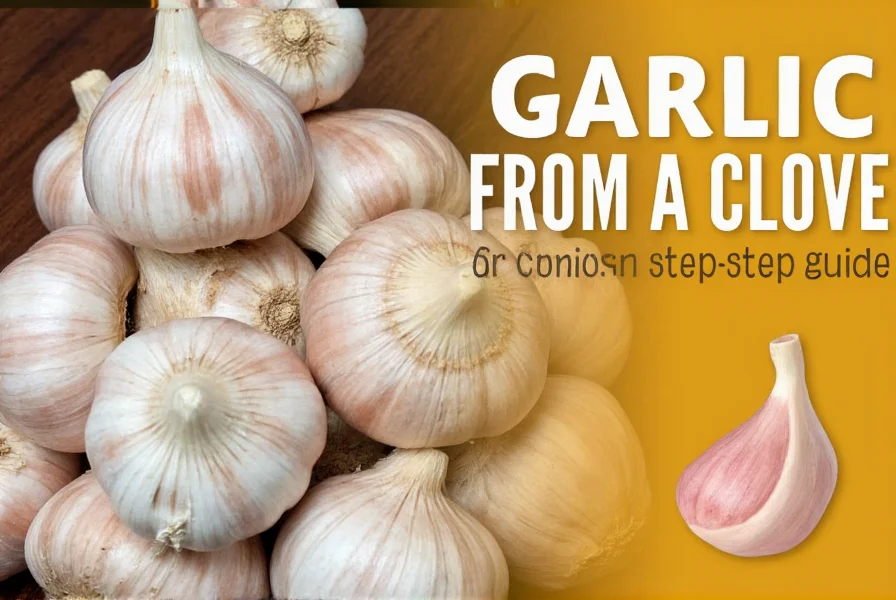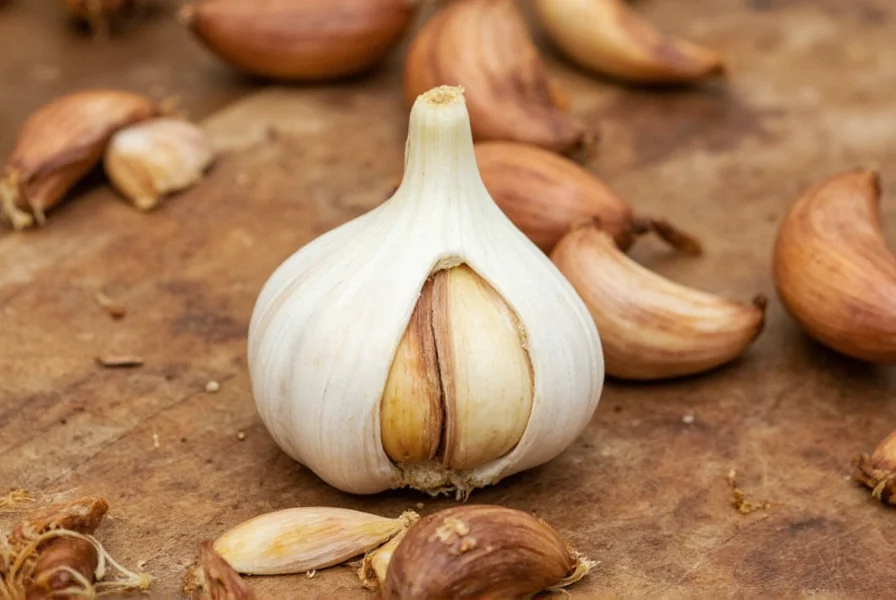Growing your own garlic offers fresh, flavorful bulbs and the satisfaction of cultivating one of gardening's most rewarding crops. Whether you're working with a small backyard plot or container garden, understanding the proper technique for growing garlic from a single clove ensures a bountiful harvest.
Understanding Garlic Types for Successful Growth
Before planting, recognize there are two main garlic varieties: hardneck and softneck. Hardneck garlic produces a central flowering stalk (scape) and typically offers more complex flavors but stores for 6-8 months. Softneck varieties lack the stiff central stalk, braid easily, and store longer (10-12 months). For beginners growing garlic from a clove, hardneck varieties often perform better in cooler climates while softnecks thrive in warmer regions.

Step-by-Step Guide to Growing Garlic from a Clove
Selecting Quality Garlic Cloves
Choose large, firm cloves from healthy bulbs. Avoid grocery store garlic treated with sprout inhibitors—instead, source from farmers' markets or seed companies. Each clove will develop into a new bulb, so larger cloves generally produce larger harvests. Separate cloves from the bulb just before planting, keeping the papery husk intact.
Optimal Planting Timing
Fall planting (4-6 weeks before first frost) yields the best results for most climates. This allows cloves to establish roots before winter dormancy, leading to larger bulbs come harvest time. In warmer zones (8+), plant in late fall or early winter. For spring planting (in colder zones where fall planting isn't possible), expect smaller bulbs as the growing season is shorter.
Soil Preparation Essentials
Garlic thrives in well-draining soil rich in organic matter. Prepare your garden bed by:
- Loosening soil to 12-16 inches deep
- Mixing in 2-4 inches of compost
- Testing pH (ideal range: 6.0-7.5)
- Adding balanced organic fertilizer before planting
| Garlic Growing Requirement | Optimal Condition | Common Mistake |
|---|---|---|
| Planting Depth | 2-4 inches (deeper in colder climates) | Planting too shallow causing winter kill |
| Spacing | 4-6 inches between cloves | Overcrowding reducing bulb size |
| Water Needs | 1 inch/week during active growth | Overwatering causing rot |
| Harvest Timing | When 1/3 of leaves turn brown | Harvesting too early or late |
Planting Technique for Maximum Yield
Place cloves pointy-end up in prepared soil. For cold climates, plant 4 inches deep with 6 inches between cloves; in milder zones, 2 inches deep with 4 inches spacing works well. Cover with soil and apply 2-4 inches of mulch (straw or leaves) to regulate soil temperature and moisture. In extremely cold regions, increase mulch to 6 inches after soil freezes.
Seasonal Care Requirements
During winter, garlic establishes roots but shows little top growth. In early spring, remove mulch gradually as temperatures warm. Water consistently during active growth (spring through early summer), providing about 1 inch of water weekly. Stop watering 2-3 weeks before harvest when lower leaves begin yellowing. For hardneck varieties, cut scapes when they form their first loop to redirect energy to bulb development.
Harvesting and Curing Process
Harvest when 1/3 of leaves turn brown (typically late spring to mid-summer depending on planting time). Carefully dig bulbs using a garden fork to avoid damage. Cure garlic in a warm, dry, shaded area with good air circulation for 2-3 weeks. Once dry, trim roots and tops, then store in mesh bags or braids in a cool, dark place with moderate humidity.

Common Mistakes When Growing Garlic from Cloves
Many gardeners encounter issues when growing garlic from a clove due to preventable errors. Planting too deep restricts sprouting, while planting too shallow exposes cloves to temperature fluctuations. Using poor draining soil leads to rot, especially in rainy climates. Over-fertilizing with nitrogen promotes leaf growth at the expense of bulb development. Harvesting too early yields small bulbs, while waiting too long causes cloves to separate in the ground.
Troubleshooting Growth Problems
Yellowing leaves often indicate overwatering or nutrient deficiency. Purple discoloration may signal phosphorus deficiency. Small bulbs typically result from late planting, overcrowding, or inadequate nutrients. If cloves fail to sprout, they may have been planted upside down or suffered from rot. Pests like onion maggots can damage roots—use row covers for prevention. Rotate garlic planting locations every 3-4 years to prevent soil-borne diseases.
Realistic Expectations for First-Time Growers
When growing garlic from a single clove, expect one mature bulb per planted clove. The harvested bulb will typically contain 8-12 cloves depending on variety and growing conditions. While you can replant some harvested cloves for next season's crop, reserve your largest bulbs for seed stock. Remember that garlic grown from grocery store cloves may produce smaller yields due to potential sprout inhibitors and lack of regional adaptation.
Frequently Asked Questions
Can I grow garlic from regular store-bought cloves?
Yes, you can grow garlic from store-bought cloves, but results may be disappointing. Many grocery store garlic bulbs are treated with sprout inhibitors and may not be adapted to your local climate. For best results, use locally grown garlic from farmers' markets or purchase seed garlic from reputable gardening suppliers.
How long does it take to grow garlic from a clove to harvest?
From planting to harvest, garlic takes approximately 8-9 months. When planted in fall, garlic establishes roots before winter, goes dormant during cold months, then resumes growth in spring. Most varieties reach maturity in late spring to mid-summer, about 180-220 days after fall planting.
What's the proper depth for planting garlic cloves?
Plant garlic cloves 2-4 inches deep, measured from the tip of the clove to the soil surface. In colder climates (zones 1-5), plant deeper (4 inches) with additional mulch for winter protection. In milder climates (zones 6-10), 2 inches is sufficient. Always plant with the pointed end facing up and the flat root end down.
Why are my homegrown garlic bulbs smaller than expected?
Small garlic bulbs typically result from late planting, overcrowding, poor soil nutrition, inadequate watering during bulbing season, or using small cloves for planting. Ensure you plant at the proper time (fall in most climates), space cloves 4-6 inches apart, provide consistent moisture during spring growth, and use large, healthy cloves for planting.











 浙公网安备
33010002000092号
浙公网安备
33010002000092号 浙B2-20120091-4
浙B2-20120091-4